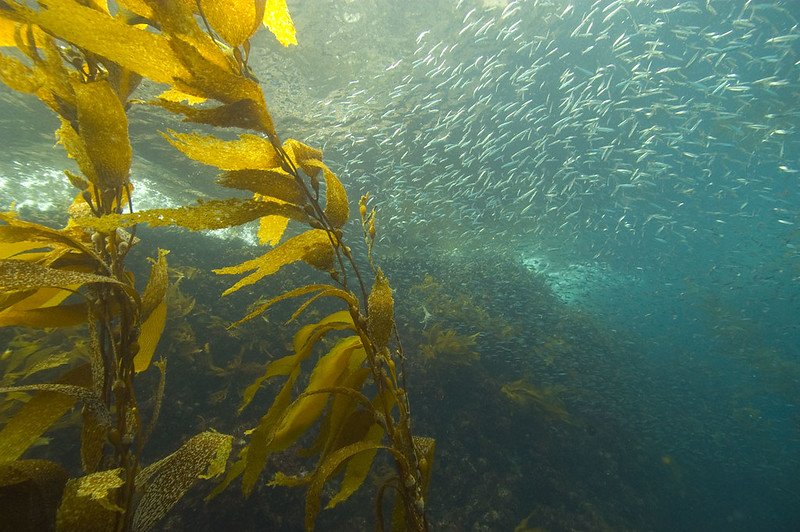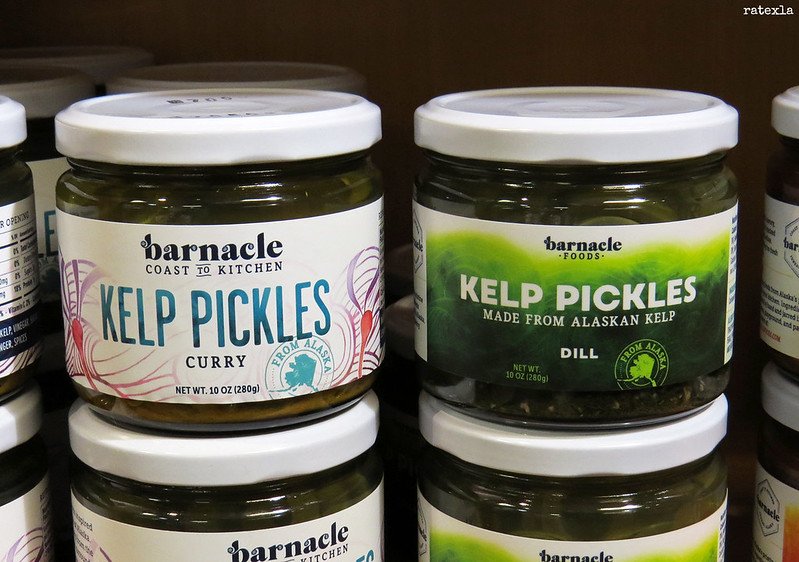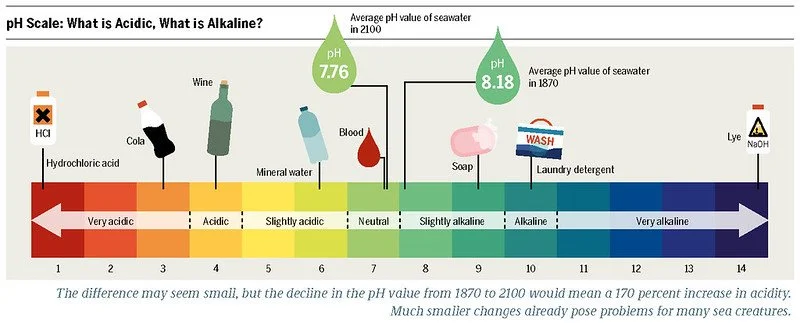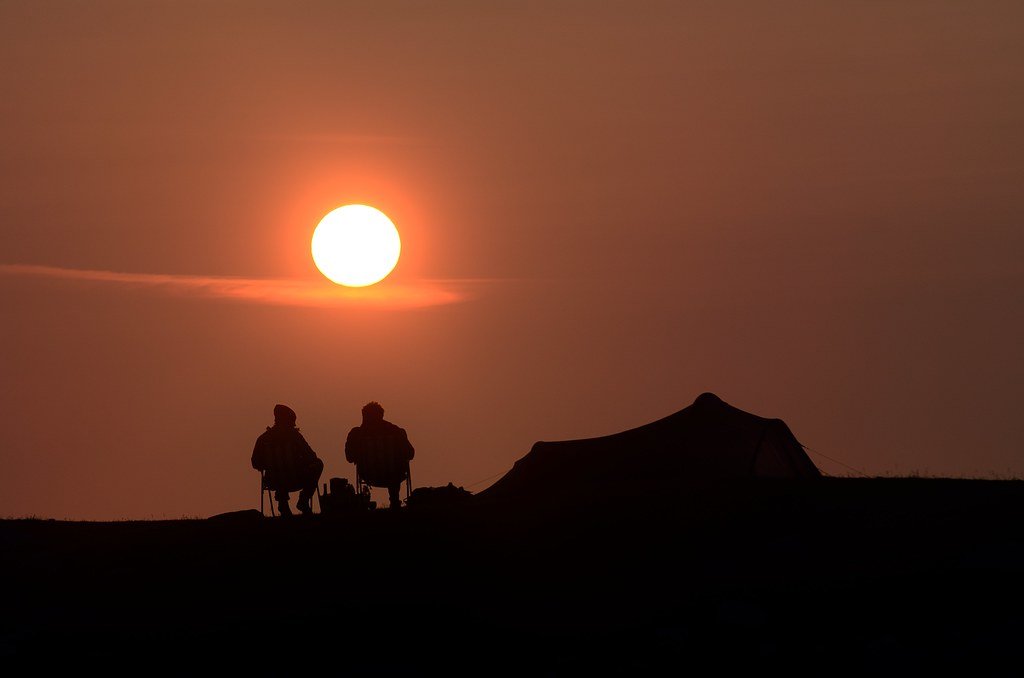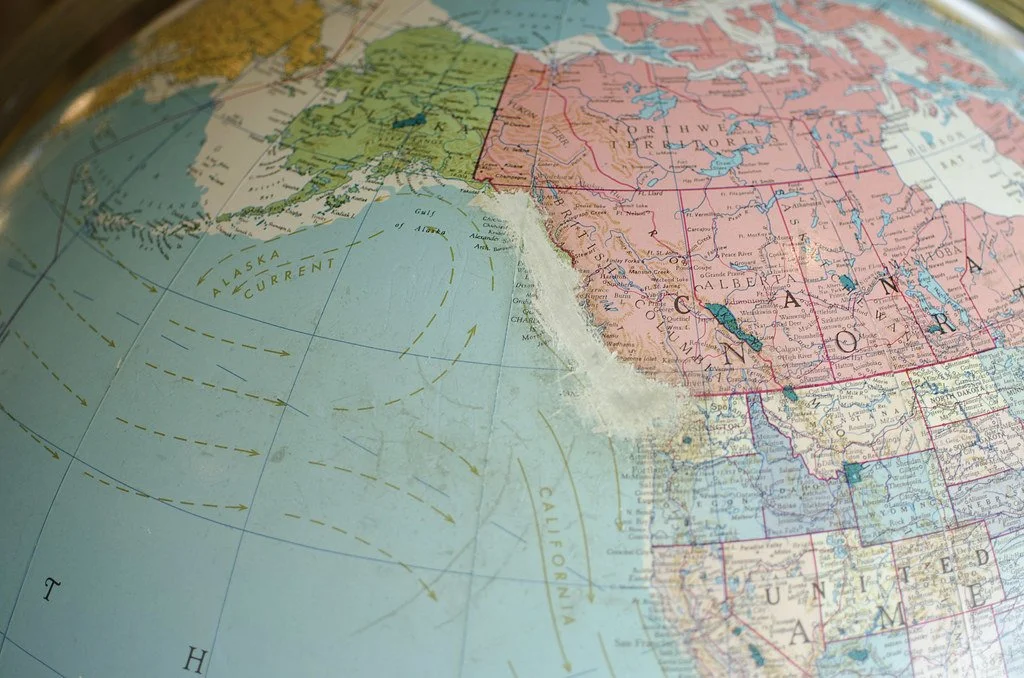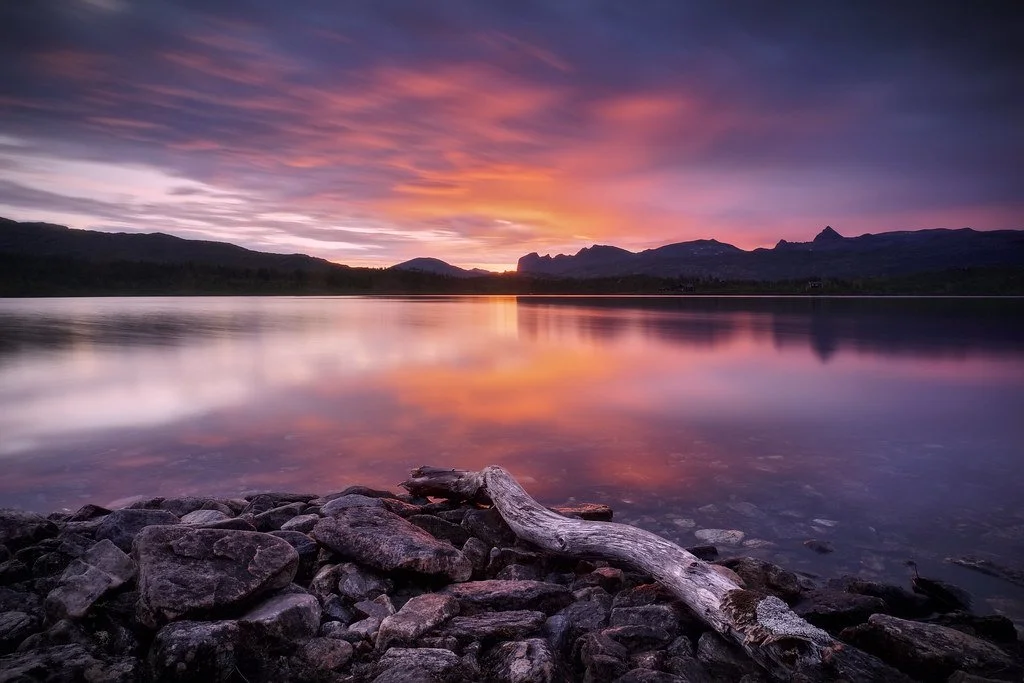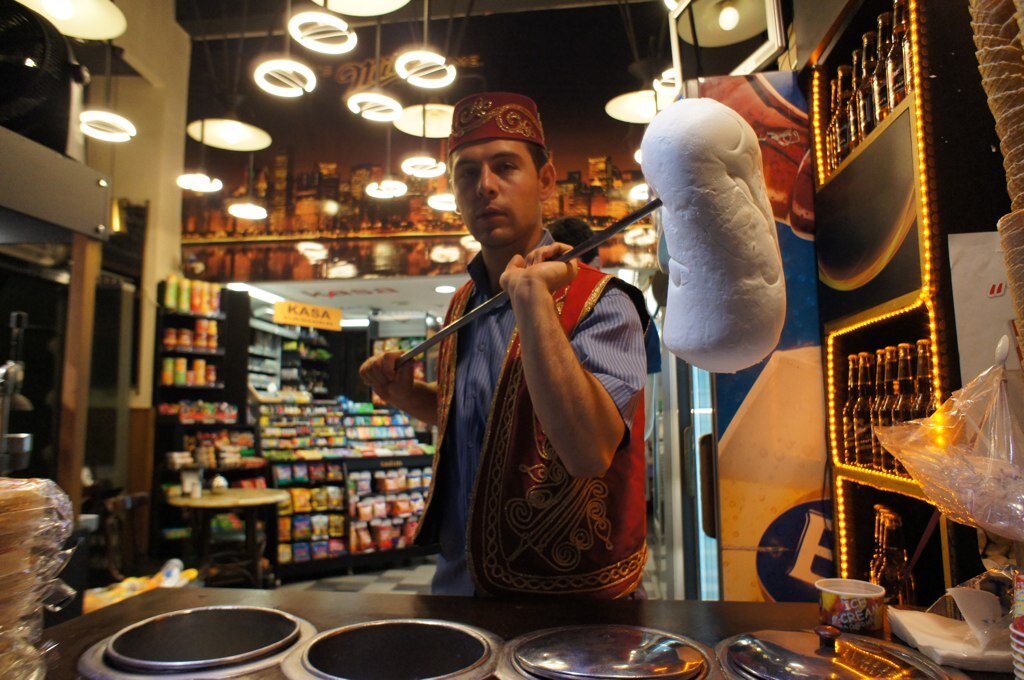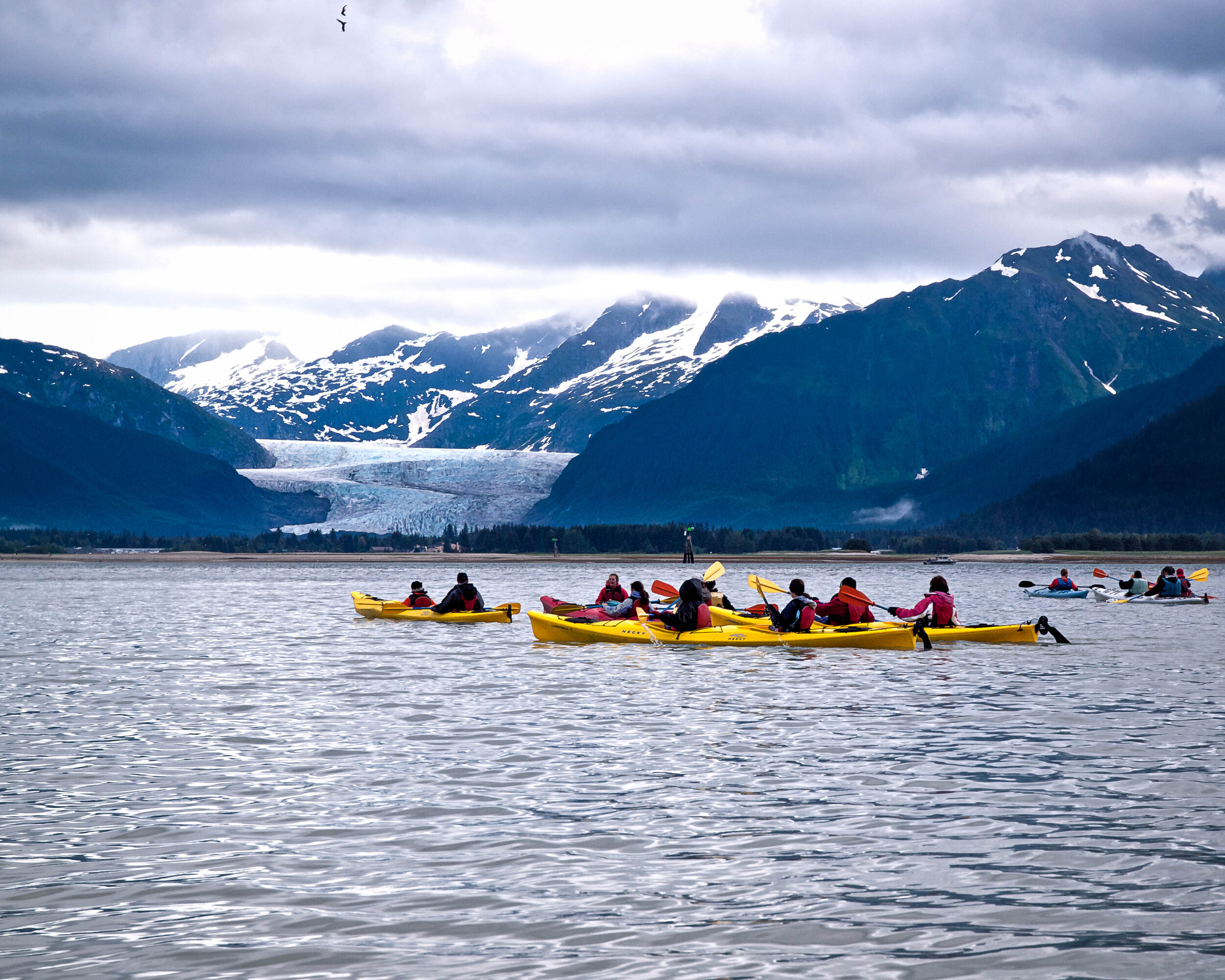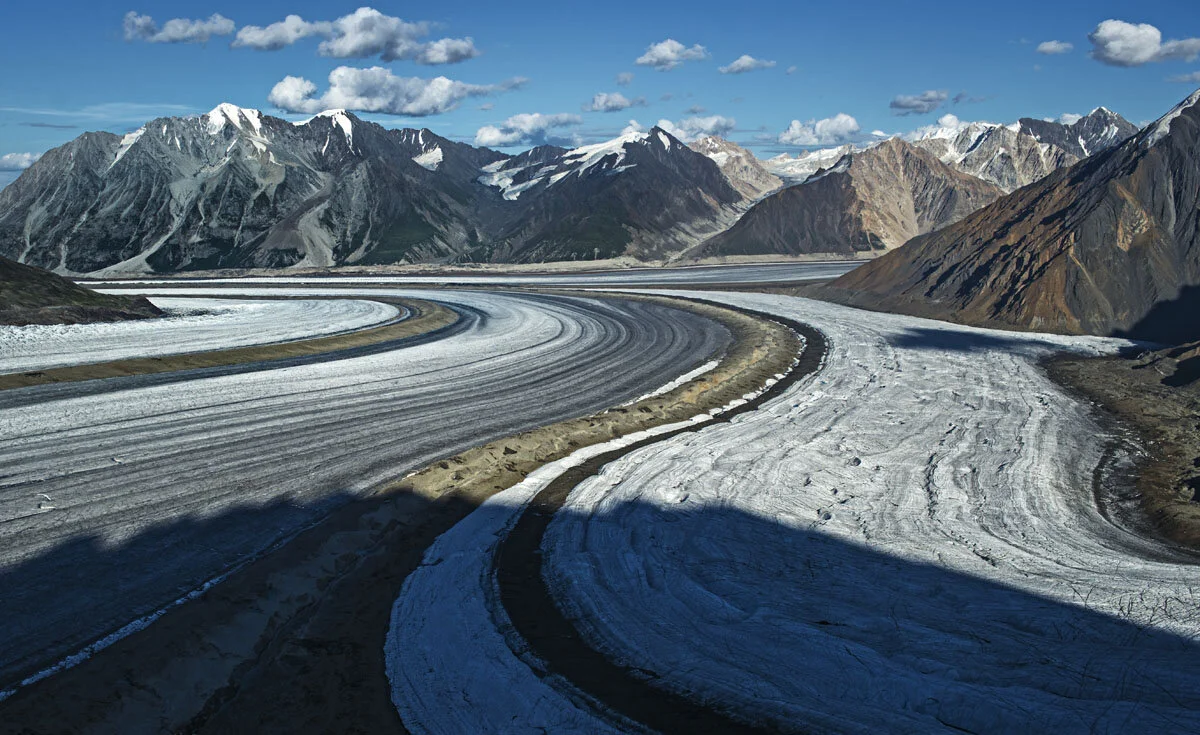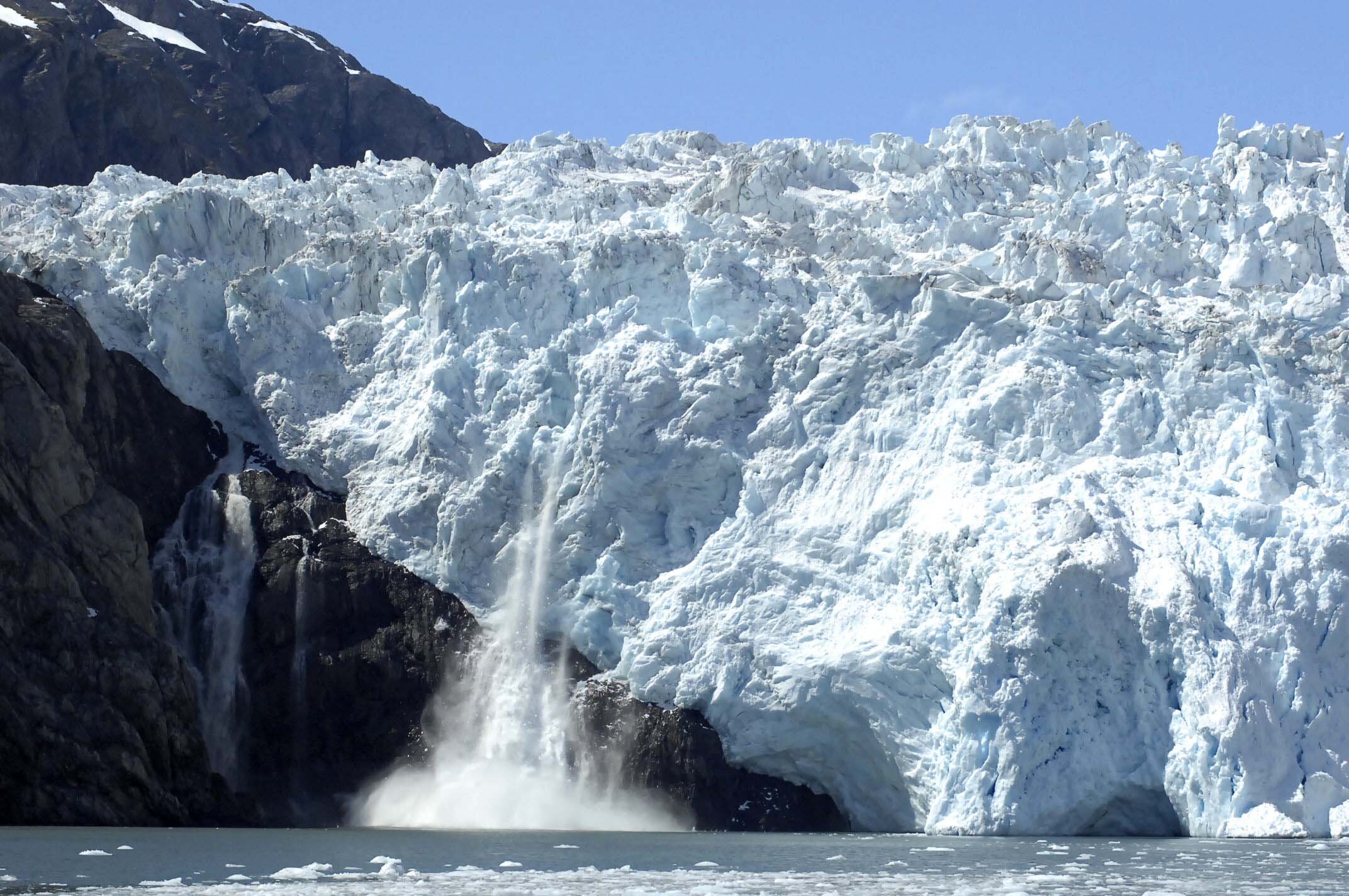From food, medicine, climate mitigation and preserving Indigenous traditions, kelp is the shape shifting superhero a polluted world needs.
Kelp with sardines. National Ocean Service. CC By 2.0.
Ethereal and elusive, an unconventional forest grows in the ocean—not full of trees, but of kelp. These captivating, yet occasionally uninviting, greenish tendrils are classified as a type of brown algae that grow as coastal seaweeds; they are typically found in colder waters. In a way, the ethereal kelp borders on the mystical and magical. Kelp is a shapeshifter; a veritable phenomenon that can morph into a variety of forms. Kelp can be used as biofuel, an eco-friendly alternative to fossil fuels derived from renewable biological materials. This multi-talented algae can also be used to make utensils, soap and clothing as well as food—all manner of products people use in their daily lives.
Beyond biofuel, food and everyday household items, the production and usage of kelp is a key debate amongst climate scientists and environmentalists alike. Farming kelp could be a solution in mitigating negative effects of climate change; it could also bolster coastal locations’ economies and positively affect the livelihoods of communities living in and around these shores. But, on the other hand, farming kelp is also fraught with bureaucratic convolutions and, in the long run, could potentially backfire and end up re-polluting oceans. In short, the implications of kelp farming are complex; they are enigmatic and double-edged, much like the kelp itself.
Alaskan Company Barnacle Foods’ Kelp Products. Josephine S. CC By 2.0.
The Eyak People of Alaska—and particularly one Dune Lankard—understand kelp farming. Lankard is the co-founder of The Eyak Preservation Council as well as the President and Founder of Native Conservancy, both of which are groups that support Alaska Native peoples’ efforts in preserving and conserving land and biodiversity on the Alaskan Coastline. People in Alaska and beyond have begun to farm kelp because of commercial, food security and climate change mitigation possibilities. And, because of its optimal climatic conditions, Alaska has become a hotspot for kelp farming.
But why is kelp—this mysterious, gangly sept of seaweed—so valuable and beneficial for the environment? For humans consuming kelp, the benefits lie within its nutritional content: kelp contains calcium, magnesium, iron, vitamin C and potassium. But, perhaps more importantly, people like Dune Lankard and fellow Alaskan kelp farmers are more concerned with kelp’s ability to mitigate climate change. Kelp’s primary ability to mitigate climate change comes from its ability to sequester carbon dioxide. You may have heard of carbon dioxide because it is a greenhouse gas. But, what you might not know, is that carbon dioxide from the atmosphere can also enter the ocean, resulting in a mechanism called ocean acidification.
pH reference scale — Ocean Acidification lowers pH. Heinrich-Böll-Stiftung. CC by 2.0.
As more carbon dioxide enters the ocean and gets absorbed, the pH of the ocean itself decreases, meaning the ocean becomes more acidic. But, this is where Kelp the superhero rushes in and saves the marine phyla. Kelp require carbon to grow because of photosynthesis—they absorb sunlight as well as carbon dioxide to produce the sugar and oxygen they need to live—and, through their uptake of carbon, they leave oceans less acidic and marine organisms more happy. Additionally, when kelp float out to sea and die, sinking deep beneath the surface of the water, their carbon sinks into the depths along with them.
Perhaps it makes sense that kelp, with its bewitching appearance, could be responsible for such intricate—almost magical—climate processes. While there are over 500 species of seaweed in Alaska, the three most-commonly grown species are bull kelp, sugar kelp and ribbon kelp. Bull kelp is strong, almost proud-looking—its thick stalk beholds a sense of authority in the water. Sugar kelp, on the other hand, is more delicately enchanting—its slightly-curled, yellow blades are like rays of sunlight spattering the sea. Ribbon kelp, with its thick spine and greenish appearance, are more reminiscent of a looming forest, or the shifting of willows in the wind.
Bull kelp bulb. James St. John. CC By 2.0.
These kelp, however, represent more than just their life cycle, climate mitigation abilities and appearance. Historically, the Eyak people—located on the Copper River Delta near Cordova, Alaska—have long used kelp for food, medicine and even tools. But, through colonialism and imperialism, some of these traditions were disrupted over decades. Today, however, the Eyak and other Indigenous peoples’ kelp farming has allowed them to reclaim these traditions. Additionally, there are immense economic benefits for any employees involved in kelp farming. The fall-to-spring growth cycle of kelp, as well as the need for regular visitation and observation of kelp farms, offer both seasonal and year-round employment opportunities. The increasing amount of kelp farms subsequently increases the number of job opportunities in Alaska, bolstering the state’s economy. Although mariculture in Alaska is currently a $1.5 million dollar industry, newly awarded $45 million in grants could potentially grow it to more than $1.85 billion in 10 years.
Kelp farming and consumption, however, is not all sunshine and rainbows. One of the most difficult aspects of kelp farming is getting started in the first place—a kelp farm requires a permit. Most states require multi-step permit application through boards of aquaculture as well as departments of fish, wildlife and game. Luckily, on average Alaska has a lower permit processing time than most states. Beyond the bureaucratic complexities of even getting started, there are also questions being raised by environmental and climate scientists about the future of kelp farming. Although—as is outlined above—kelp farming is believed to help ocean acidification through carbon sequestration, some scientists are questioning the ability for kelp to continue to sequester carbon as ocean temperatures warm as a result of climate change.
While people should be mindful of the ambiguous future of kelp farming, for now it is safe to say that the more immediate outcomes of farming are helping kelp maintain a positive reputation. Kelp—delicate and mysteriously distant—is, in actuality, an aid toward a variety of more tangible, positive outcomes. Kelp is food. Kelp is medicine. Kelp can even represent community and prosperity. Of course, kelp can also be a huge factor in sequestering carbon in a post-industrial society. But, for many people, these scientific processes can feel overwhelming or unimportant simply because they seem intangible. This is why the effects of kelp that people can really see and feel—the sense of community, the positive economic impacts and the reclamation of tradition—are something to celebrate. Despite its unconventionality and elusivity, kelp can be a superhero.
Carina Cole
Carina Cole is a Media Studies student with a Correlate in Creative Writing at Vassar College. She is an avid journalist and occasional flash fiction writer. Her passion for writing overlaps with environmentalism, feminism, social justice, and a desire to travel beyond the United States. When she’s not writing, you can find her meticulously curating playlists or picking up a paintbrush.

